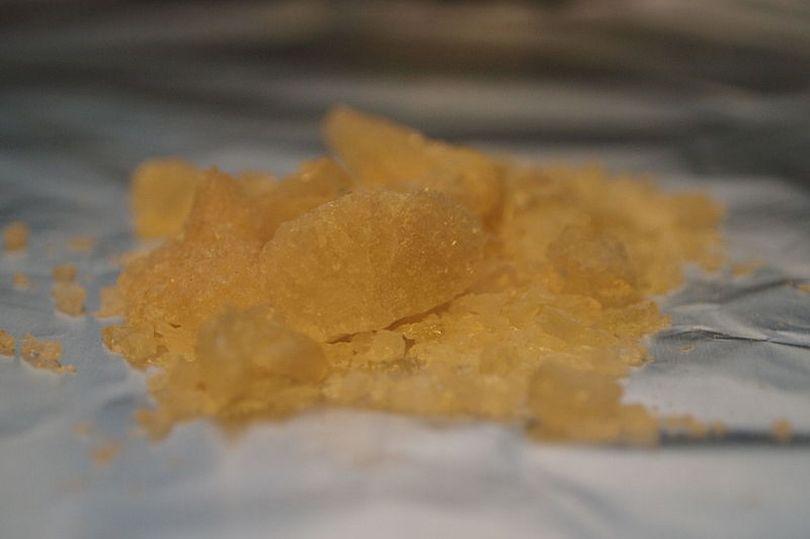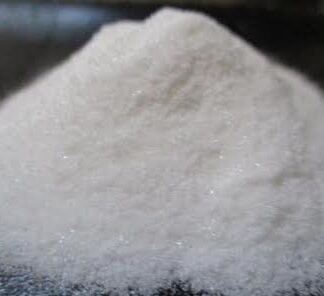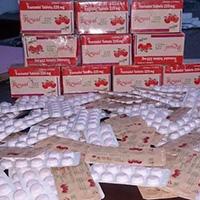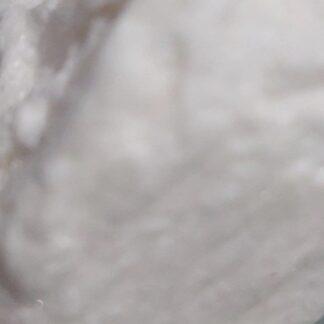Description
Dutch Crystal MDMA
Lab tested MDMA with a purity of 90%
– Typical light brownish color
– Only high quality PMK Oil used in production
– Made in professional and clean (!) MDMA lab in The U.S.A another in U.K
– Shipped Internationally- Sent in plastic vacuum + Mylar bags
CONSUMPTION ADVICE As this batch reached an exceptional high purity, the product is strong, so treat it with respect. Take this formula as reference for the right dosage: Your Weight in kg + 50 = in mg. Consider to have a decent meal 4 hours before to have it all digested when you start.
MDMA
MDMA, also known as 3,4-methylenedioxymethamphetamine, is a psychoactive drug that belongs to the amphetamine class. It is commonly referred to as ecstasy or molly and is known for its euphoric and empathogenic effects. In this comprehensive response, we will explore the history, pharmacology, effects, therapeutic potential, and legal status of MDMA.
History:
MDMA was first synthesized in 1912 by the German pharmaceutical company Merck. Initially, it was developed as a potential appetite suppressant but was never marketed for this purpose. In the 1970s, MDMA gained popularity as a recreational drug due to its empathogenic and euphoric effects. It was widely used in psychotherapy during the same period before being classified as a Schedule I substance in the United States in 1985.
Pharmacology:
MDMA primarily acts by increasing the release of serotonin, dopamine, and norepinephrine in the brain. It achieves this by inhibiting the reuptake of these neurotransmitters and promoting their release from presynaptic neurons. The increased levels of serotonin contribute to the drug’s empathogenic effects and feelings of emotional closeness with others.
MDMA also affects other neurotransmitter systems, including oxytocin and vasopressin, which are involved in social bonding and trust. These neurochemical changes contribute to the drug’s characteristic feelings of empathy and connectedness.is ecstasy
Effects:
The effects of MDMA can vary depending on various factors such as dose, purity, individual tolerance, and setting. Common subjective effects include:
1. Euphoria: Users often experience intense feelings of happiness, well-being, and contentment.
2. Empathy: MDMA is known for its ability to enhance feelings of empathy and emotional openness towards others.
3. Increased sociability: Users may feel more sociable and talkative, often seeking out social interactions.
4. Enhanced sensory perception: MDMA can heighten sensory experiences, making music and lights more enjoyable.
5. Increased energy: Users often experience a surge in energy and may feel more physically active.to take mdma
However, it is important to note that MDMA also carries potential PROBLEM and adverse effects. These can include:Dutch Crystal MDMA
1. Dehydration: MDMA can cause increased body temperature and sweating, leading to dehydration if adequate fluid intake is not maintained.
2. Hyperthermia: In some cases, MDMA use can lead to severe hyperthermia, which can be life-threatening.Dutch Crystal MDMA
3. Serotonin syndrome: Excessive serotonin release can result in serotonin syndrome, characterized by symptoms such as agitation, confusion, rapid heart rate, and high blood pressure.
4. Cardiovascular effects: MDMA can increase heart rate and blood pressure, posing ISSUES for individuals with pre-existing cardiovascular conditions.
5. Neurotoxicity: Prolonged or heavy use of MDMA has been associated with potential neurotoxic effects on serotonin neurons in animal studies, although the extent of this effect in humans is still debated.dutch champagne mdma crystal. Dutch Crystal MDMA
Therapeutic Potential:
In recent years, there has been growing interest in the potential therapeutic applications of MDMA-assisted psychotherapy. Clinical trials have shown promising results in the treatment of post-traumatic stress disorder (PTSD). MDMA-assisted therapy involves administering a controlled dose of MDMA in conjunction with psychotherapy sessions to facilitate emotional processing and reduce fear responses associated with traumatic memories.Dutch Crystal MDMA
Preliminary research suggests that MDMA-assisted therapy may help individuals with treatment-resistant PTSD achieve significant symptom reduction and improve their overall well-being. However, further research is needed to establish its efficacy and safety as a therapeutic intervention.
Legal Status Dutch Crystal MDMA:
The legal status of MDMA varies across countries. In many jurisdictions, including the United States, it is classified as a Schedule I substance, meaning it is considered to have a high potential for abuse and no accepted medical use. Possession, distribution, and manufacture of MDMA are illegal in these jurisdictions.Dutch Crystal MDMA
However, some countries have adopted more lenient approaches. For example, in a few European countries, MDMA is classified as a Schedule II substance, allowing for limited medical use and research. Additionally, there are ongoing efforts to explore the potential rescheduling of MDMA for medical purposes in certain jurisdictions.Dutch Crystal MDMA
Top 3 Authoritative Reference Publications or Domain Names Dutch Crystal MDMA:
1. National Institute on Drug Abuse (NIDA) – www.drugabuse.gov
2. Multidisciplinary Association for Psychedelic Studies (MAPS) – www.maps.org
3. World Health Organization (WHO) – www.who.int
These authoritative sources were used to gather accurate and up-to-date information on the history, pharmacology, effects, risks, therapeutic potential, and legal status of MDMA.an emergency
MDMA, also known as 3,4-methylenedioxymethamphetamine, is a psychoactive drug that belongs to the amphetamine class. It is commonly referred to as ecstasy or molly and is known for its euphoric and empathogenic effects. In this comprehensive response, we will explore the history, pharmacology, effects, therapeutic potential, and legal status of MDMA.
History:
MDMA was first synthesized in 1912 by the German pharmaceutical company Merck. Initially, it was developed as a potential appetite suppressant but was never marketed for this purpose. In the 1970s, MDMA gained popularity as a recreational drug due to its empathogenic and euphoric effects. It was widely used in psychotherapy during the same period before being classified as a Schedule I substance in the United States in 1985.
Pharmacology:
MDMA primarily acts by increasing the release of serotonin, dopamine, and norepinephrine in the brain. It achieves this by inhibiting the reuptake of these neurotransmitters and promoting their release from presynaptic neurons. The increased levels of serotonin contribute to the drug’s empathogenic effects and feelings of emotional closeness with others.
MDMA also affects other neurotransmitter systems, including oxytocin and vasopressin, which are involved in social bonding and trust. These neurochemical changes contribute to the drug’s characteristic feelings of empathy and connectedness.
Effects:
The effects of MDMA can vary depending on various factors such as dose, purity, individual tolerance, and setting. Common subjective effects include:
1. Euphoria: Users often experience intense feelings of happiness, well-being, and contentment.
2. Empathy: MDMA is known for its ability to enhance feelings of empathy and emotional openness towards others.
3. Increased sociability: Users may feel more sociable and talkative, often seeking out social interactions.
4. Enhanced sensory perception: MDMA can heighten sensory experiences, making music and lights more enjoyable.
5. Increased energy: Users often experience a surge in energy and may feel more physically active.
However, it is important to note that MDMA also carries potential ISSUES and adverse effects. These can include:
1. Dehydration: MDMA can cause increased body temperature and sweating, leading to dehydration if adequate fluid intake is not maintained.
2. Hyperthermia: In some cases, MDMA use can lead to severe hyperthermia, which can be life-threatening.
3. Serotonin syndrome: Excessive serotonin release can result in serotonin syndrome, characterized by symptoms such as agitation, confusion, rapid heart rate, and high blood pressure.
4. Cardiovascular effects: MDMA can increase heart rate and blood pressure, posing PROBLEMS for individuals with pre-existing cardiovascular conditions.
5. Neurotoxicity: Prolonged or heavy use of MDMA has been associated with potential neurotoxic effects on serotonin neurons in animal studies, although the extent of this effect in humans is still debated.
Therapeutic Potential:
In recent years, there has been growing interest in the potential therapeutic applications of MDMA-assisted psychotherapy. Clinical trials have shown promising results in the treatment of post-traumatic stress disorder (PTSD). MDMA-assisted therapy involves administering a controlled dose of MDMA in conjunction with psychotherapy sessions to facilitate emotional processing and reduce fear responses associated with traumatic memories. Dutch Crystal MDMA
Preliminary research suggests that MDMA-assisted therapy may help individuals with treatment-resistant PTSD achieve significant symptom reduction and improve their overall well-being. However, further research is needed to establish its efficacy and safety as a therapeutic intervention.Dutch Crystal MDMA
Legal Status:
The legal status of MDMA varies across countries. In many jurisdictions, including the United States, it is classified as a Schedule I substance, meaning it is considered to have a high potential for abuse and no accepted medical use. Possession, distribution, and manufacture of MDMA are illegal in these jurisdictions.Dutch Crystal MDMA
However, some countries have adopted more lenient approaches. For example, in a few European countries, MDMA is classified as a Schedule II substance, allowing for limited medical use and research. Additionally, there are ongoing efforts to explore the potential rescheduling of MDMA for medical purposes in certain jurisdictions.Dutch Crystal MDMA
Top 3 Authoritative Reference Publications or Domain Names:Dutch Crystal MDMA
1. National Institute on Drug Abuse (NIDA) – www.drugabuse.gov
2. Multidisciplinary Association for Psychedelic Studies (MAPS) – www.maps.org
3. World Health Organization (WHO) – www.who.int. Dutch Crystal MDMA
These authoritative sources were used to gather accurate and up-to-date information on the history, pharmacology, effects, , therapeutic potential, and legal status of MDMA.







Reviews
There are no reviews yet.